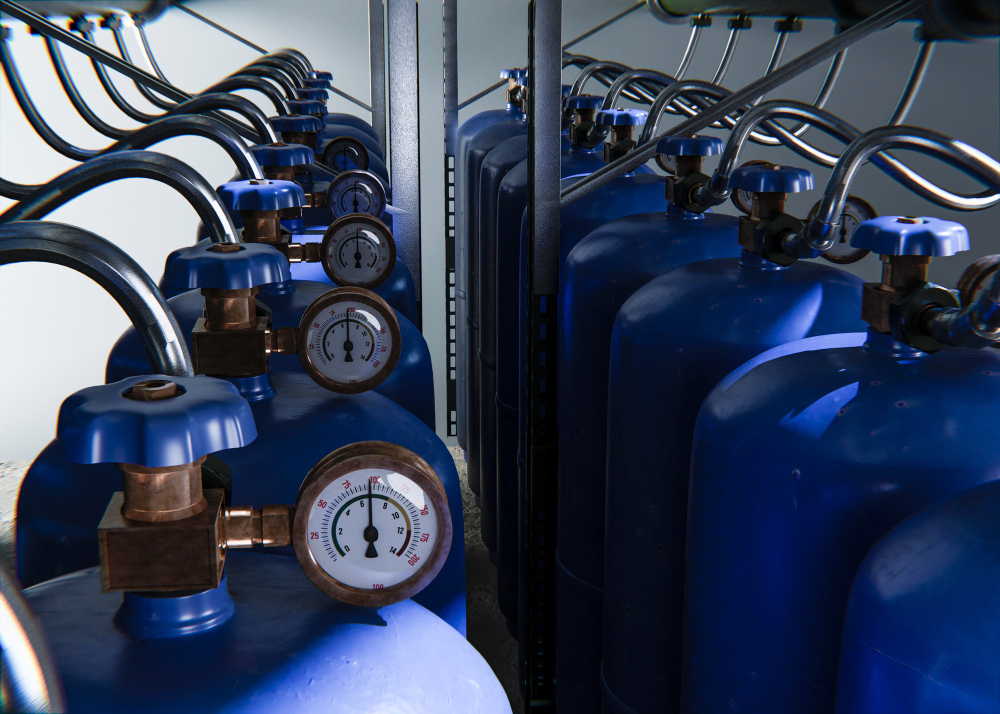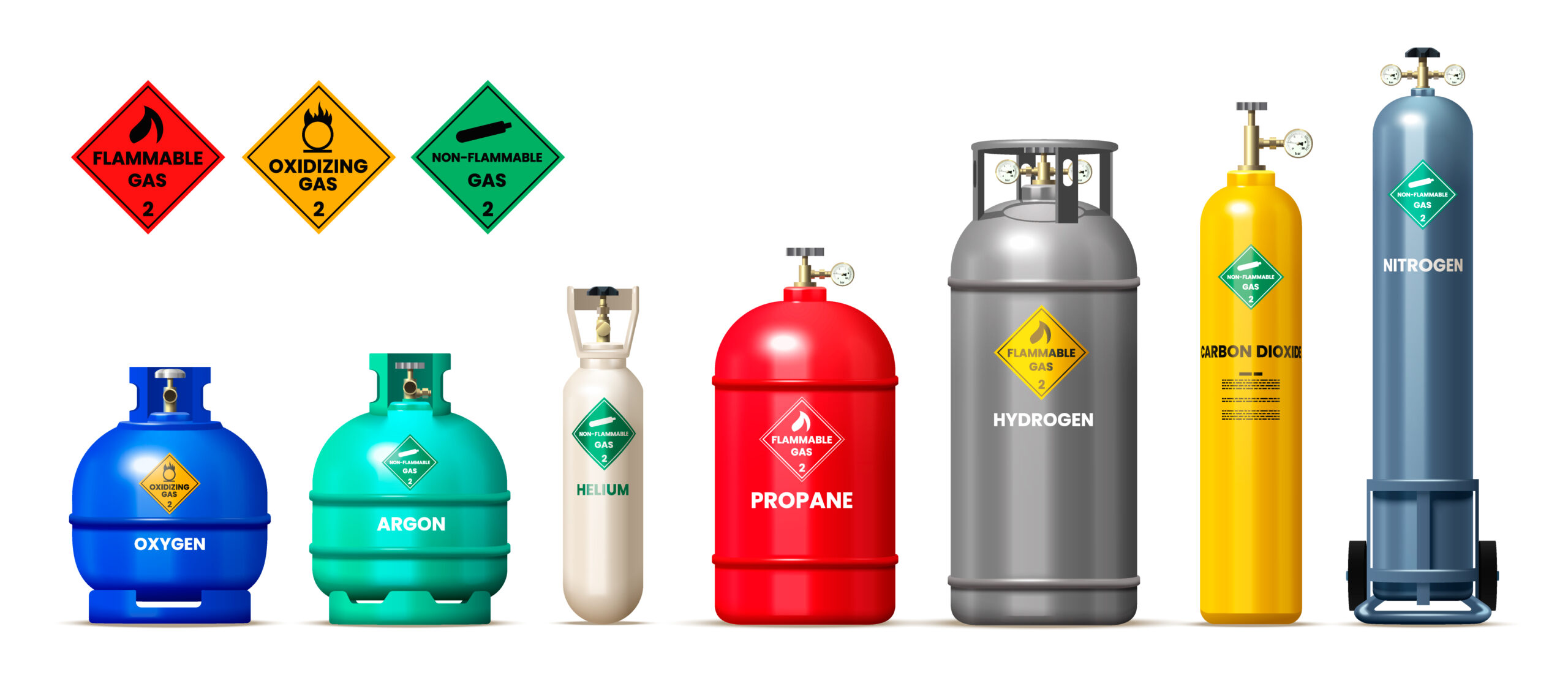Under Pressure Unveiling the Hidden Dangers Inside Gas Cylinders
- 1 The importance of gas cylinders in everyday life
- 2 Types of gases stored in cylinders
- 2.1 The risks associated with gas cylinder storage
- 2.2 Hidden dangers: corrosion and degradation
- 2.3 Safety measures for handling and storing gas cylinders
- 3 Conclusion: Promoting awareness for the safe use of gas cylinders
Gas cylinders play a crucial role in our everyday lives, silently supporting various aspects of our daily routines. From the moment we wake up to the time we go to bed, gas cylinders are at work behind the scenes, delivering energy for cooking, heating water, and even powering vehicles. However, their importance often goes unnoticed until there is a shortage or malfunction.
The importance of gas cylinders in everyday life
Take your morning routine as an example – a hot shower that invigorates you and prepares you for the day wouldn’t be possible without gas cylinders providing the energy needed to heat the water. It’s easy to take this convenience for granted, but imagine going back in time when people had to heat buckets of water over an open fire. Gas cylinders have made our lives more convenient and efficient by removing these mundane tasks from our busy schedules.
Contrary to popular belief, gas cylinders aren’t limited to domestic use alone; they are instrumental in various industries as well. Hospitals rely on gases stored within these cylinders for life-saving medical procedures such as anesthesia and respiratory treatments. In manufacturing plants, gas cylinders power heavy machinery that allows us access to products we use every day.
While often overlooked or taken for granted, gas cylinders are indispensable in modern society. They provide essential energy sources that enhance our quality of life by making everyday activities more convenient and efficient.
Types of gases stored in cylinders
When it comes to gas cylinders, there are various types containing different gases, each with its unique properties and uses. One common type is the oxygen cylinder, used in medical facilities to support patients with respiratory conditions or during surgical procedures. Oxygen cylinders are also utilized in industrial settings for cutting and welding operations.
Another widely used gas stored in cylinders is carbon dioxide (CO2). This gas is commonly found in beverage dispensers, where it provides the fizz and carbonation we enjoy in our favorite sodas and sparkling waters. CO2 cylinders are also utilized in fire extinguishers due to its ability to displace oxygen, smothering flames effectively.
Other types of gases stored in cylinders include nitrogen (used extensively for cooling purposes), helium (the star of many celebratory occasions with its use in balloons), and acetylene (a crucial component for oxyacetylene welding). These gases offer a plethora of applications across industries such as manufacturing, construction, healthcare, and entertainment.
From life-saving medical procedures to creating an enchanting ambiance at parties, the variety of gases stored inside cylinders is truly fascinating. As we encounter these seemingly innocuous containers on a daily basis, it’s important to appreciate their significance and potential dangers if mishandled or improperly stored. Understanding the types of gases housed within these cylinders helps us appreciate their importance while emphasizing the need for safety precautions when dealing with such pressurized substances.
The risks associated with gas cylinder storage
Gas cylinders are commonly used in various industries for storing and transporting compressed gases, but their storage comes with a host of risks. One primary concern is the potential of gas leaks, which can lead to fire or explosion hazards. Even a small leakage can have devastating consequences if the gas is flammable or toxic. Additionally, improper handling and storage practices can result in accidents such as cylinder falling or tipping over, causing severe injury or property damage.
Another often overlooked risk is the potential for corrosion and degradation of gas cylinders over time. Exposure to moisture, extreme temperatures, and certain chemicals can cause structural weaknesses that compromise the integrity of the cylinder. This means that even seemingly intact cylinders could be prone to sudden failure during use or storage, leading to dangerous situations.
To mitigate these risks associated with gas cylinder storage, businesses and individuals alike need to follow proper safety protocols laid out by relevant authorities. This includes regular inspections of cylinders for signs of damage or wear, adherence to specific temperature requirements during storage, and implementing secure methods to prevent accidental cylinder movement or falling.
Hidden dangers: corrosion and degradation
Hidden dangers lurk inside gas cylinders, and one of the most alarming is corrosion and degradation. Gas cylinders are used in various industries for storing and transporting highly pressurized gases, making them susceptible to corrosion over time. Corrosion can weaken the structural integrity of the cylinder, leading to catastrophic failures that can endanger lives.
The problem lies in the fact that corrosion is often a silent killer. It’s invisible to the naked eye until it’s too late. The degradation process may start from within, initiated by reactions between the gas contents and materials used in constructing the cylinder. Over time, these reactions can compromise the strength and reliability of the cylinder, even if it looks perfectly fine on the outside.
This highlights why regular inspections and maintenance checks are crucial when dealing with gas cylinders. A well-maintained cylinder not only ensures safety but also extends its lifespan significantly. Implementing preventive measures such as protective coatings or specialized alloys can help combat corrosion risks. With proper care and attention to hidden dangers like corrosion and degradation, we can ensure that gas cylinders remain safe tools for many years to come.
Safety measures for handling and storing gas cylinders
When it comes to handling and storing gas cylinders, safety should always be the top priority. Gas cylinders contain highly volatile substances that can pose significant risks if mishandled or stored incorrectly. One crucial safety measure is ensuring proper ventilation in areas where gas cylinders are stored. Adequate airflow helps prevent the accumulation of any leaked gases, reducing the chance of a potentially explosive mixture forming. Additionally, it is essential to store gas cylinders in well-ventilated spaces away from potential ignition sources such as open flames or electrical equipment.
Another critical safety consideration is ensuring the cylinders are properly secured at all times. Gas cylinders should never be left unattended or left lying on their sides, as this can increase the risk of accidents. Proper storage racks or cages designed specifically for gas cylinders should be used to keep them upright and stable. Regular checks for any signs of damage or corrosion are also vital, as weakened cylinder walls can compromise their integrity and lead to leaks or ruptures.
Lastly, personnel handling gas cylinders must receive adequate training and follow strict protocols when it comes to transportation and use. This includes wearing appropriate personal protective equipment (PPE) such as gloves and goggles to minimize the risk of exposure to hazardous materials in case of accidental release. Following these safety measures will go a long way in preventing accidents and ensuring everyone’s well-being when working with gas cylinders.
Remember, prioritizing safety when handling and storing gas cylinders cannot be emphasized enough.
Conclusion: Promoting awareness for the safe use of gas cylinders
In conclusion, promoting awareness of the safe use of gas cylinders is of paramount importance. The hidden dangers lurking inside these seemingly harmless metal containers can have catastrophic consequences if not handled properly. By educating the public on how to handle and store gas cylinders safely, we can mitigate the risks associated with their use.
However, raising awareness alone is not enough; concrete actions must be taken by both individuals and governments to ensure that safety protocols are implemented and followed. This includes regular inspections of gas infrastructure, proper training for handling gas cylinders, and strict enforcement of regulations regarding their transportation and storage.
Additionally, it is crucial to invest in innovative technologies that can further enhance the safety of gas cylinder usage. For example, smart sensors could be installed in cylinders to monitor pressure levels and alert users when they exceed recommended limits. These technological advancements coupled with a collective effort towards education will undoubtedly help prevent accidents related to gas cylinder mishandling.



















